Contents
Short History of Alexandria
Alexander the Great possibly christened around 70 settlements from Africa to Asia after his own name (along with at least one after his horse’s name). The small Egyptian port town of Rhacotis, with its natural harbor and proximity to the Nile delta, was one of those ‘chosen’ settlements, and it was thus rechristened ‘Alexandria’ in 331 BC.
But of course, beyond just the new name, the tiny port was also reinvigorated with a brand new suburb constructed beside the old town – with the plan apparently conceived by Alexander himself. And this is what Strabo had to say about the city after almost 300 years of its (re)founding –
The city has magnificent public precincts and royal palaces which cover a fourth or even a third of the entire area. For just as each of the kings would, from a love of splendor, add some ornament to the public monuments, so he would provide himself at his own expense with a residence in addition to those already standing.
Suffice it to say, Alexandria was a thriving city by the 1st century BC, known for the grand Temple of Serapis (Serapeum) that was adjoined to the Great Library of Alexandria. And while the city aptly secured its cultural status as a great center of learning, it also flaunted its commercial glory with the Pharos Lighthouse – constructed on an island by the polis and considered one of the ancient Seven Wonders of the World.
And the good news for us history enthusiasts is that most of these fascinating architectural high points are presented through a superb 3D animation concocted by the folks over at AncientVine.
As the video makes it clear at the beginning, the recreation pertains to the setting of this Egyptian metropolis circa 51 BC. It should be noted that after the fall of Carthage (in 146 BC), Alexandria was also dominated by the Roman sphere of influence – so much so that by 80 BC, many parts of the city possibly passed under nominal Roman leverage.
In any case, circa 51 BC, the Ptolemies (Cleopatra’s dynasty) still had control of Egypt, which paved the way for their bitter embroilment in two successive Roman civil wars. And by 30 BC, their entire Egyptian realm was formally annexed by Rome, and Alexandria was declared as a province of the newly formed Roman Empire under the directive of Augustus.
The city, however, continued to thrive as the second-largest metropolis of the empire, and evolved as one of the classical centers of learning of Greek disciplines, like philosophy and mathematics, till the 4th century AD.
The Great Library of Alexandria
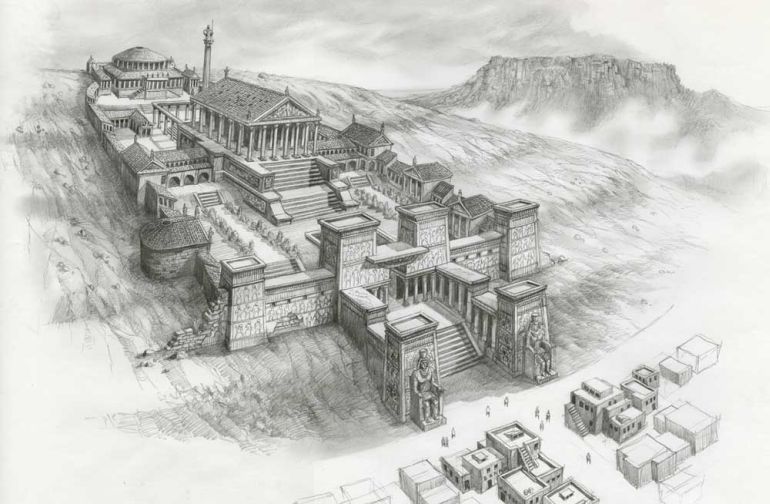
One of the largest libraries of ancient times, the Great Library of Alexandria was dedicated to Muses, the nine goddesses of art. And in spite of its eminence, the grand library’s founding is still lost in legend – with most scholars agreeing that the impressive institution was initially established by Ptolemy I (305-285 BC), but was fully completed during Ptolemy II’s reign (285-246 BC). It was the latter ruler who took the brilliant (yet surprising) initiative of sending invitations to other kings to contribute their books and tomes to the library.
On many levels, the search for books almost took the obsessive route – with even commercial ships being thoroughly inspected by the authorities for papyrus rolls (that were either confiscated or returned after copies were made). On other occasions, the royal members of Egypt sponsored special trips to well-known book fairs (like in Athens and Rhodes) for acquiring various rare specimens of literary works.
One significant incident mentioned by Galen (which may have been an anecdote), refers to how Ptolemy III paid fifteen talents (1,000 lbs/450 kg) of precious metal to the Athenians for procuring the original scripts of Aeschylus, Sophocles, and Euripides.
In any case, there is no doubt that the Great Library of Alexandria was a massive structure, with various estimates pointing out that it could hold over half a million books. It is also said that Marcus Antonius gifted Cleopatra over 200,000 books for the Royal Library – though this figure might just be a bit fanciful. As for the architectural scope of the library structure, it was possibly joined with the Serapion (or Serapeum), the magnificent Temple of Serapis.
Showcasing a brilliant ‘fusion’ of both Egyptian and Greek architectural elements, the ‘collective’ campus boasted various spatial features, including specific rooms for reading and dining, lecture halls, gardens, colonnaded walkways, and of course the great hall with its array of organized bookshelves.
It should also be noted that the library was probably part of a bigger complex that belonged to the umbrella institution of the Musaeum of Alexandria (or the Institution of the Muses). This Musaeum was the focal point for learning various disciplines, like the philosophical schools (such as a Platonic Academy), music and poetry schools, and the library with its storehouse for a multitude of tomes.
The Serapeum of Alexandria
The reconstruction above was created in-game for Assassins Creed: Origins by Ubisoft Studios. As mentioned in the earlier paragraph, the Serapeum of Alexandria was a massive temple precinct (which possibly adjoined the Library or an offshoot of the Library) dedicated to Serapis (or Sarapis), the Greco-Egyptian deity of the Sun.
Possibly devised as an entity by the ruling Ptolemy dynasty, the deity served as a cultural bridge between the Greeks and the native Egyptians. With the passage of time, Serapis was also associated with the aspects of fertility and healing.
Coming to the scope of the Serapeum itself, the magnificent structure, built during the reign of Ptolemy III Euergetes (circa 246 – 222 BC), was said to be the largest and most beautiful of all the Greek temples of Alexandria. Interestingly enough, the temple was perched atop an elevated ground (acropolis) and was possibly constructed on the foundations of an older Greek temple that was erected by Ptolemy I Soter (the companion of Alexander the Great).
Suffice it to say, the sheer scale of the sprawling building, accentuated by the imposing elevation, was a conspicuous landmark during ancient times. Unfortunately, much of the structure was later destroyed by mobs of rioting Christians circa 391 AD.
The Lighthouse of Alexandria
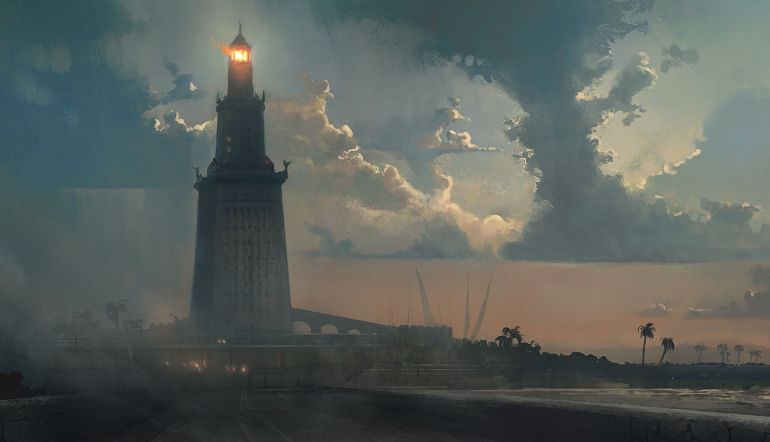
One of the rare instances of Greek architecture that went beyond the human scale to ‘godly’ dimensions, the Lighthouse of Alexandria (also known as the Pharos of Alexandria) constructed by the Ptolemaic Kingdom (possibly by Ptolemy I Soter), may have been the tallest structure in the ancient world, with some accounts mentioning its height to soar up to an incredible 492 ft.
Unfortunately, since the building is not extant, we have to revert to its lowest possible height in accordance with other literary sources – which was still impressive at 377 ft (or 115 m). As Judith McKenzie from the Faculty of Oriental Studies at the University of Oxford made it clear –
The Arab descriptions of the lighthouse are remarkably consistent, although it was repaired several times, especially after earthquake damage. The height they give varies only fifteen percent from c 103 to 118 m [338 to 387 ft], on a base c. 30 by 30 m [98 by 98 ft] square…the Arab authors indicate a tower with three tapering tiers, which they describe as square, octagonal and circular, with a substantial ramp.
Now in terms of design, the Lighthouse of Alexandria built from light-hued stone blocks was vertically divided into three components – the lowermost (and broadest) square section with four huge facades, the thinner middle section with an octagonal plan, and the upper-most slimmest section with a circular plan.
The functionality of the enormous structure was related to this upper level, with a mirror being installed atop it that reflected sunlight during the daytime, while the fire was lit during the night. And given the sheer volume of the facades, the arranged stone blocks of the ancient lighthouse were supposedly reinforced with molten lead so as to withstand the force of the incoming sea waves.
Given such advanced engineering credentials, it comes as no surprise that the Lighthouse of Alexandria was considered one of the Seven Wonders of the Ancient World.
Video Source: AncientVine (YouTube)
Article Sources: Ancient.eu / Britannica / University of Chicago
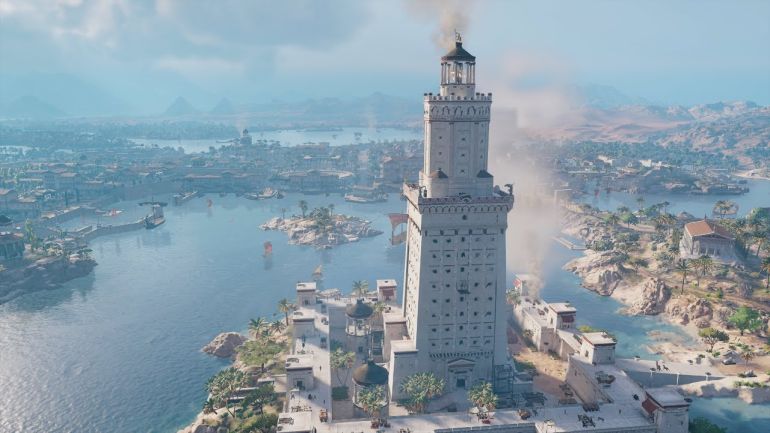

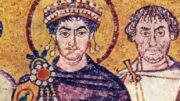
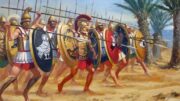

Be the first to comment on "Ancient Alexandria of Egypt: History and Reconstruction"